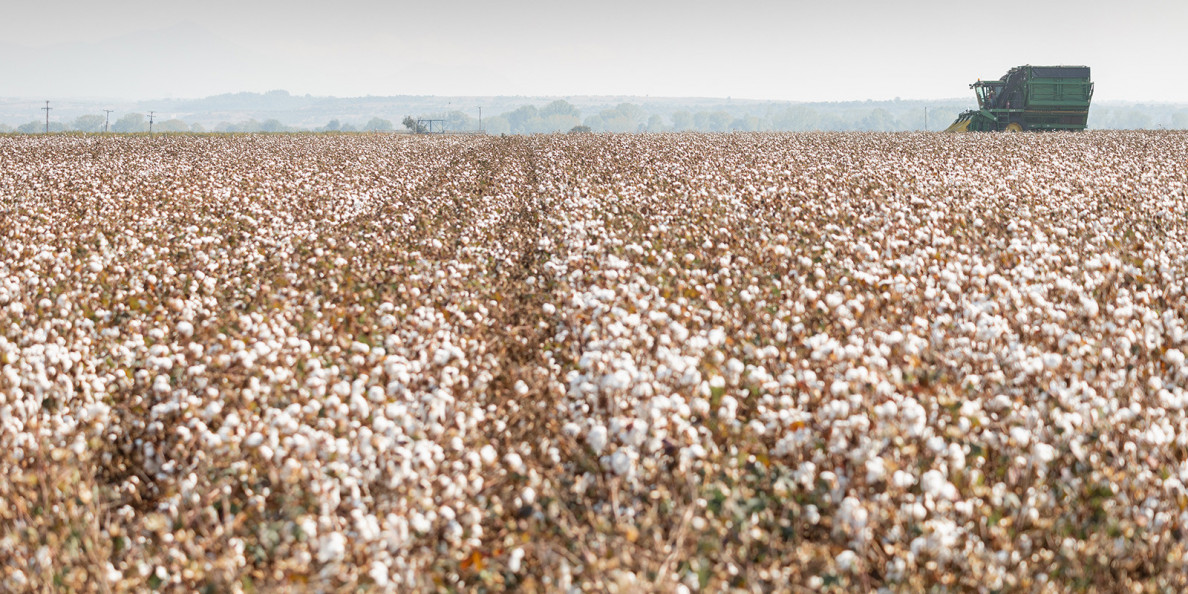The world’s population is increasing, but the global supply of arable land and water are not. Meeting the food and fiber demands of a burgeoning population depends on increasing the output of crops and the efficient and environmentally responsible use of resources such as land and water.
Enter biotechnology. Used successfully for more than 30 years, modern biotechnology is the science of altering the genetic makeup of living organisms to achieve production improvements such as increased quality and volume, and reduced environmental impact. As a tool for agriculture, biotechnology is a proven means to help meet the challenges of future generations.
A well-documented example of biotechnological success is the eradication of the boll worm in the U.S. Though not the only predatory pest to cotton, the boll weevil is regarded as one of the most destructive. Producers have also faced attacks from tobacco budworms, cotton bollworms and pink bollworms. By the mid-1990s, invasions from these pests meant a 4% reduction in yields, or a quarter billion dollars’ worth of cotton. But research from Cotton Incorporated, in conjunction with the USDA and cotton growers across the country, reduced the threat posed by these harmful and costly infestations through the introduction of biotech cotton varieties that were better able to defend against the boll weevil.
Introduction of Biotech Cotton
Cotton Incorporated identified Bt, a bacterium formally known as Bacillus thuringiensis, which had been used as a topical pesticide by organic cotton growers since 1920, primarily to kill flour moths. As a liquid spray, the product was not widely used because it was easily and negatively affected by the weather: rain rapidly washed it away and the sun degenerated its beneficial properties. Farmers instead turned to synthetic pesticides, which were prevalent and effective.
By the mid-1980s, insects had begun building up resistance to the insecticides that were currently available. At the same time, many researchers had begun to understand the environmental impact of those pest deterents. A new type of insecticide was needed; one that would protect crops without damaging the environment. As a natural protein, Bt was promising option that targeted specific pests, but its traditional application presented challenges to its efficacy.
Cotton Incorporated sponsored research at notable research institutions such as Texas A&M and Texas Tech. Scientists found that through molecular biology, they were able to move the gene that encodes the Bt crystal directly into a plant. Bt cotton was introduced in 1996.
Prior to commercialization, the USEPA, the USDA and the FDA subjected Bt cotton, like every other biotech product, to a rigorous regulatory evaluation. Comprehensive environmental and human safety studies were conducted, ruling out the possibility of harm to existing plants, non-target organisms, and humans.
From 1996 to 2007, 23% less insecticide active ingredient was used in Bt-adopting countries, and the resulting environmental impact from reduced insecticide use has fallen by 28% as measured by Environmental Impact Quotient (EIQ). Since the introduction of Bt cotton, the number of insecticide applications in the U.S. has been reduced by half. In 2008, 44% of U.S. cotton farms had fields that required no foliar insecticides. That same year, nearly one-third of U.S. cotton acreage required no insecticide.
Not only has Bt cotton improved lint yield, but it has also decreased costs for insecticide supplies, equipment and labor, and lowered the quantity of chemicals that enter the environment.
The benefits of Bt cotton are recognized around the world by cotton growers, who have seen their income increase significantly, by up to US$250 per hectare. Moving forward, the industry seeks to leverage biotechnology to develop plants that are resistant to an even wider variety of insect pests.
Biotechnology & Sustainability
Consider that by 2050:
- There will be 3 billion more people on the planet — more than 9 billion people in total;
- Food production must double to meet population needs;
- Fiber production must triple to clothe the growing population;
- Natural resources will not replenish themselves in pace with population growth; and,
- If unchecked, environmental stressors will further jeopardize the well-being of the entire planet.
Agricultural biotechnology is essentially a means of accelerating the development of desirable traits in a plant; akin to natural evolution, controlled breeding, and the crossbreeding farmers have done for centuries. For the cotton industry, biotechnology has delivered insect tolerant cotton plants that drive economic development and promote environmental safety. Biotechnology, in the form of RNAi technology, enables the suppression of toxins in cottonseed, making possible the widespread use of cottonseed for human food — a crucial development for a world seeking to feed 9 billion people.
Biotechnology has been researched and tested for more than a generation, and more advances will come. The regulatory standards for safety and effectiveness of biotech products in the U.S. are rigorous and comprehensive, designed to scrutinize and assess all aspects of the food, feed and environmental safety of crops developed via biotechnology.
Regulators, scientists and the industry choose to err on the side of caution. In the U.S. three agencies are involved in the regulation of biotechnology. They are:
The Food and Drug Administration (FDA) assesses the safety of all biotech plant products intended for consumption by humans and animals. Genetically modified varieties are regarded as containing food additives.
The Department of Agriculture (USDA), through its Animal and Plant Health Inspection Service (APHIS), oversees field testing of biotech seeds and plants to make sure their release causes no harm to agriculture and the environment.
The Environmental Protection Agency (EPA) evaluates biotech plants’ environmental safety—such as their pesticide properties, possible effect on wildlife and how these plants break down in the environment. The agency also must approve any herbicide use with herbicide-tolerant crops.
Biotechnology is the present and the future of cotton. The technology is already providing increased yields on less land with less water, soil and other resources. And scientific advances in biotechnology are coming at an ever-faster rate, portending a future of full cotton sustainability.


